- × 1 × € 739,34
The mesmerizing rhythms of Middle Eastern and North African music have captivated audiences worldwide, and at the heart of these enchanting melodies lies the clay darbuka – a goblet-shaped drum that has been the backbone of traditional music for centuries. Whether you're a seasoned percussionist or a curious beginner drawn to the rich sounds of ethnic music, understanding how to choose the right clay darbuka can transform your musical journey. This comprehensive buying guide will walk you through everything you need to know about selecting the perfect clay darbuka, and introduce you to the exceptional collection available at Tapadum Ethnic Music Store.
The clay darbuka, also known as doumbek or tabla, represents one of the most ancient forms of percussion instruments in human history. Originating from the Middle East and spreading throughout the Mediterranean and North African regions, this traditional drum has maintained its authentic sound and cultural significance for over 5,000 years.
Clay darbukas are distinguished by their unique construction materials and sound qualities. Unlike their metal or synthetic counterparts, clay darbukas produce a warm, earthy tone with exceptional resonance and depth. The porous nature of clay allows the instrument to "breathe," creating subtle harmonic overtones that give each drum its distinctive character.
The traditional goblet shape serves both aesthetic and acoustic purposes. The narrow neck and wide body create a natural amplification chamber, while the rounded edges provide comfortable hand positioning for extended playing sessions.
Clay darbukas come in various sizes, each offering different tonal characteristics:
Consider your intended use – solo practice, group performances, or recording – when selecting the appropriate size.
The quality of clay directly impacts both durability and sound quality. Look for darbukas made from:
Handcrafted instruments typically offer superior sound quality compared to mass-produced alternatives, as skilled artisans can adjust the clay composition and firing process for optimal acoustics.
Traditional clay darbukas feature either natural skin or synthetic heads:
Adjustable tension systems allow you to fine-tune your instrument's pitch and response, making them essential for serious players.
While sound quality remains paramount, the visual appeal of your clay darbuka contributes to your overall musical experience. Traditional decorative elements include:
Mastering the clay darbuka requires understanding fundamental playing techniques. The instrument produces two primary sounds:
The "Doum" (bass tone): Created by striking the center of the drumhead with the dominant hand's palm or fingertips. This produces the characteristic deep, resonant sound that forms the foundation of most rhythmic patterns.
The "Tek" (treble tone): Achieved by striking the rim area with fingertips, creating a sharp, crisp accent that adds definition and complexity to rhythms. The clay construction enhances the contrast between these two fundamental sounds, making traditional patterns more pronounced and musical.
Finger rolls, flams, and ghost notes become more expressive on clay instruments due to their responsive nature and dynamic range.
Proper maintenance ensures your clay darbuka remains in optimal condition for years to come. Clay instruments require specific care due to their porous nature and sensitivity to environmental changes.
Tapadum Ethnic Music Store stands as a premier destination for authentic ethnic musical instruments, offering an exceptional collection of high-quality clay darbukas sourced directly from master craftsmen across the Middle East and North Africa. Their curated selection represents the finest traditions of darbuka making, ensuring that every instrument meets the highest standards of sound quality and craftsmanship.
At Tapadum, you'll find clay darbukas ranging from beginner-friendly models perfect for learning traditional rhythms to professional-grade instruments suitable for recording and performance. Each darbuka in their collection is carefully selected for its unique tonal characteristics, visual appeal, and cultural authenticity.
The knowledgeable team at Tapadum understands the nuances of ethnic percussion and can guide you toward the perfect instrument based on your skill level, musical goals, and budget. Their commitment to preserving traditional music-making extends beyond sales to include educational resources and ongoing support for their customers' musical journeys.
Clay darbuka prices vary significantly based on craftsmanship, materials, and origin. Understanding the relationship between price and quality helps ensure you make an informed investment.
Consider your long-term musical goals when establishing your budget, as a quality instrument will grow with your skills and provide years of musical satisfaction.
Different regions have developed distinct darbuka styles, each reflecting local musical traditions and craftsmanship techniques. Understanding these variations enhances your appreciation of the instrument's cultural depth.
Characterized by their precise craftsmanship and clear, articulate sound, Turkish clay darbukas often feature intricate geometric patterns and superior clay composition. The Turkish playing style emphasizes technical precision and complex rhythmic patterns.
Egyptian instruments tend to produce warmer, more mellow tones with emphasis on the bass frequencies. Traditional Egyptian darbukas often incorporate distinctive decorative motifs reflecting the country's rich musical heritage.
These darbukas frequently feature bold, colorful decorations and unique clay compositions that produce characteristic tonal qualities. The robust construction reflects the instruments' role in energetic traditional celebrations and folk music.
For newcomers to ethnic percussion, selecting your first clay darbuka represents an exciting step into a rich musical tradition. Focus on instruments that offer the best balance of playability, sound quality, and durability within your budget.
Medium-sized darbukas (9-10 inches) provide the most versatile starting point, offering both bass and treble capabilities while remaining comfortable for extended practice sessions. Look for instruments with adjustable synthetic heads that maintain consistent tuning while you develop your playing technique.
Consider purchasing from reputable dealers like Tapadum Ethnic Music Store, where expert guidance and quality assurance ensure your first darbuka experience is positive and inspiring.
Experienced percussionists seeking to expand their darbuka collection should consider instruments that complement their existing setup and musical projects. Multiple darbukas of different sizes create opportunities for layered compositions and enhanced rhythmic complexity.
Professional players often maintain both clay and metal darbukas, utilizing each type's unique characteristics for different musical contexts. Clay instruments excel in intimate acoustic settings and recording applications where their warm, natural resonance shines.
Investing in high-quality clay darbukas from master craftsmen not only enhances your musical capabilities but also supports traditional artisan communities and preserves ancient music-making techniques.
The clay darbuka represents far more than a musical instrument – it embodies thousands of years of cultural tradition, artistic expression, and human connection through rhythm. Choosing the right clay darbuka opens doors to exploring rich musical traditions while providing a deeply satisfying creative outlet that can last a lifetime.
The unique warmth and character of clay construction cannot be replicated by modern synthetic materials, making authentic clay darbukas invaluable additions to any percussionist's collection. Whether you're drawn to the meditative aspects of solo practice or the communal energy of ensemble playing, a quality clay darbuka from Tapadum Ethnic Music Store ensures your musical journey begins with an instrument worthy of the traditions it represents.
The privilege of owning an authentic ethnic instrument extends beyond personal enjoyment – it connects you to a global community of musicians who share a passion for preserving and celebrating diverse musical cultures. Your clay darbuka becomes a bridge between ancient traditions and contemporary expression, allowing you to participate in a musical legacy that spans continents and generations.
What drew you to the enchanting world of ethnic percussion, and which traditional rhythms are you most excited to explore with your clay darbuka?
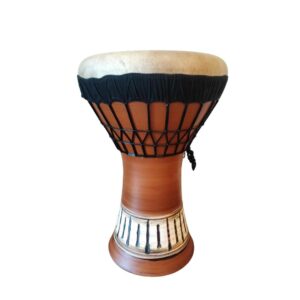
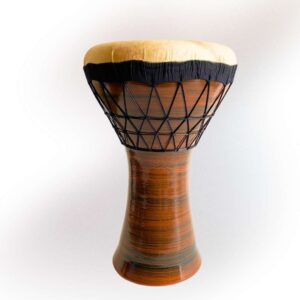
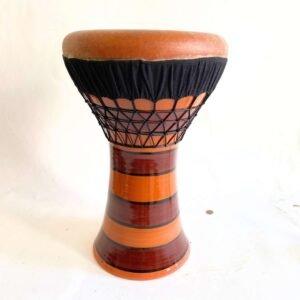
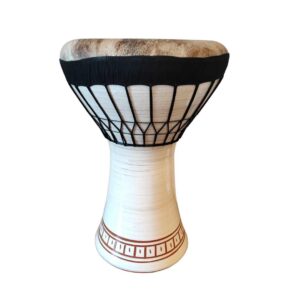
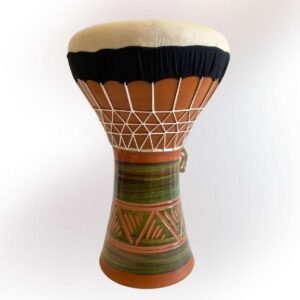
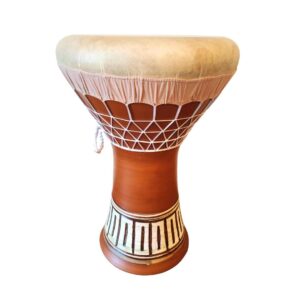
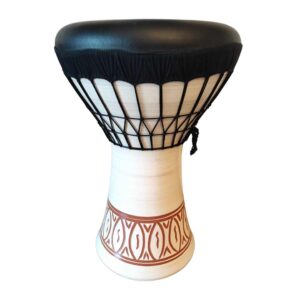
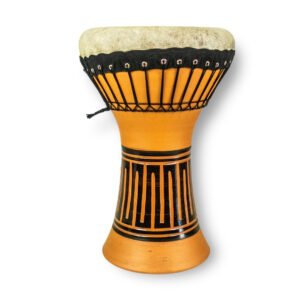
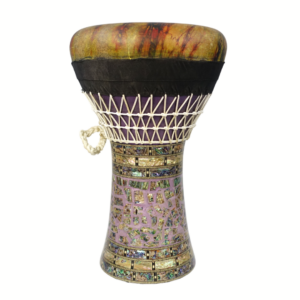

Mail: info@tapadum.com
Working Days/Hours: Mon – Sun / 10:00 AM – 5:00 PM
Le visite in negozio richiedono un appuntamento